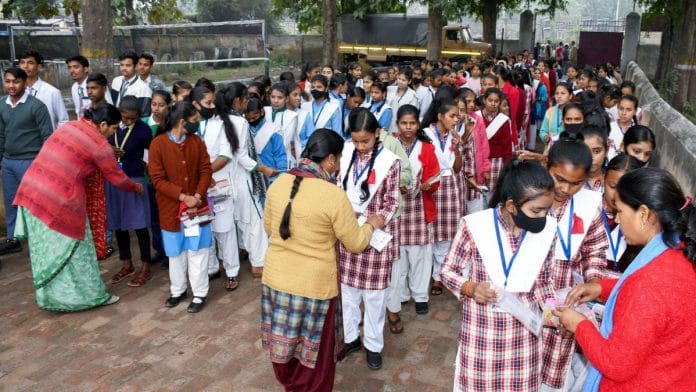The ugly and cruel side of social media was once again on display—and this time the target was a girl from Uttar Pradesh who topped the Class 10 boards and scored 98.5 per cent. We should be celebrating with her. Instead, social media users pounced on her — for her looks.
People made fun of her facial hair, projecting their insecurities on her. A moment meant to celebrate her academic excellence was sabotaged cruelly. And chances are, it may well become a traumatising moment for Nigam.
As I sit down to write, a wave of sadness and disbelief spreads through me, but at the same time, I wonder if the internet has ever spared anyone. And by internet, I mean us—people hooked to social media, ready to comment under the safety of anonymity.
We have failed Nigam. Her picture did the rounds on social media and WhatsApp groups—and instead of congratulations, snark comments followed.
Awareness and sensitivity have taken a back seat as people bullying her have completely forgotten what a remark like this can do to a young teenager. My biggest questions are, is society’s notion of beauty more important than a young girl’s academic success? And why are women—irrespective of their age—always at the receiving end of it?
The incident brought forward that in the UP board, the girls’ pass percentage was 93.40 per cent, surpassing the boys’ pass percentage of 86.05 per cent.
Also read: Braless, hairy and brown — coronavirus lockdown is our chance to change beauty standards
Pressure to be perfect
Soon after her photo was shared online, memes were made, judgement was passed and her original photo was morphed to show a “beautiful version” of her.
With the rise of photo-editing tools and filters, and the desire to look perfect, it has become easy for people to create a version of themselves that doesn’t exist in reality, setting the bar so high that most cannot match. Imperfections are clearly not acceptable and certain beauty standards are followed blindly. In all of this, when the photo of a teenager with facial hair went viral, people forgot how it could affect her confidence, mental health and outlook toward life.
As someone who was insecure about her facial features and body type during her teenage years, I know how cruel society can be. When you are a teenager, you crave external validation and you want to be like those so-called role models that you see on the internet or your television screens.
The pervasive culture of body shaming, of judging others based on their appearance rather than their character or abilities, is a reflection of the deeper societal fault lines that we often fail to address. When it comes to the internet, logic often is the biggest casualty.
Moreover, while we talk about beauty, we forget that what we see outside is affected by a number of changes happening in the body, many of them out of our control. There has been an increase in hormonal imbalance among young girls in India. Recent data suggests that one in five Indian women suffer from Polycystic Ovarian Syndrome (PCOS), which often gets diagnosed at a very young age. And one of the biggest symptoms of PCOS is facial hair growth or hirsutism.
Over the past few days, more and more people on social media are coming to Nigam’s defence—verbally annihilating those perpetuating and spreading this cruelty. But that’s not enough. There should never have been a need for them to do this in the first place. Nigam should be celebrated and cheered on.
Views are personal.
(Edited by Theres Sudeep)






